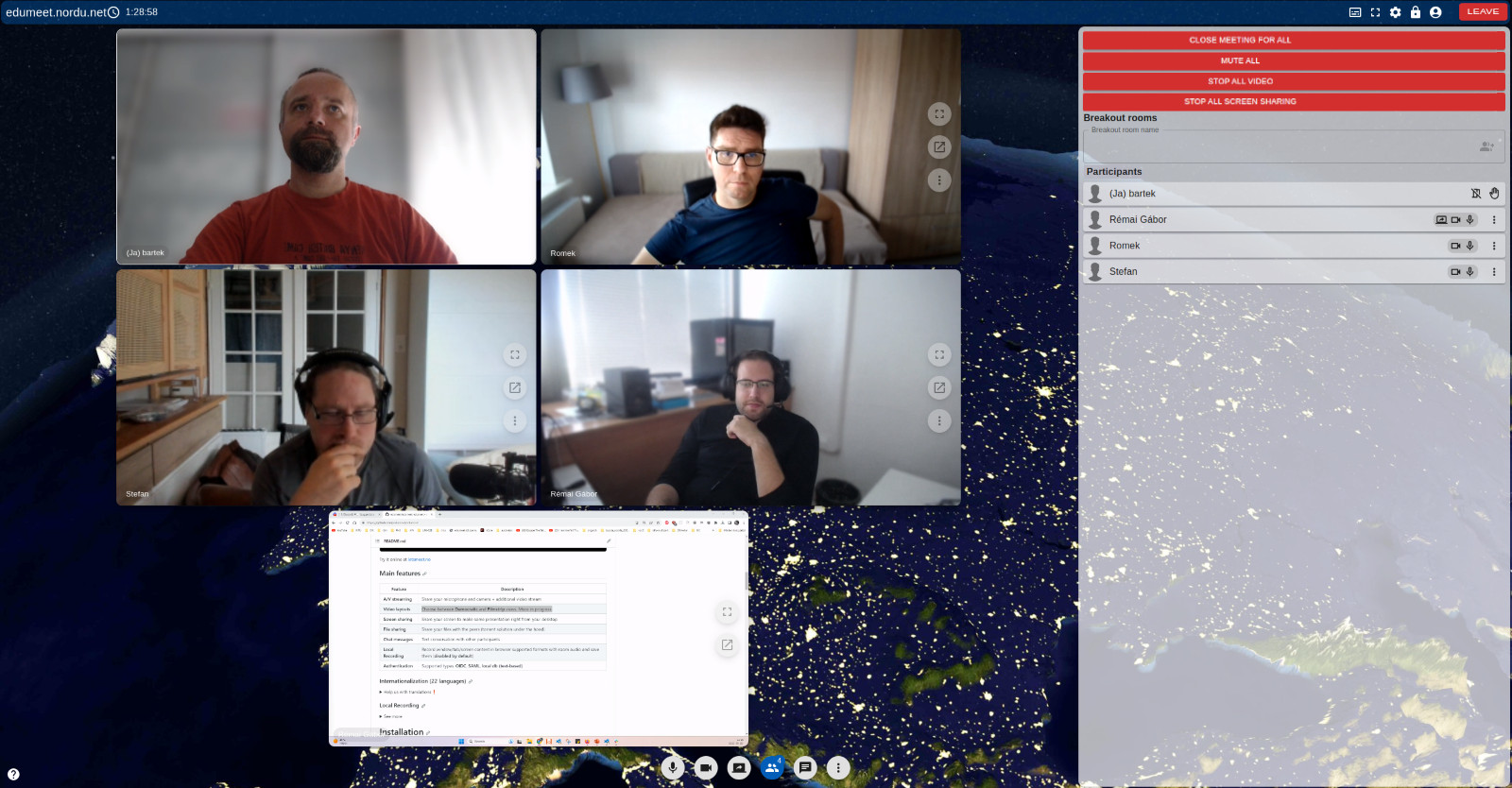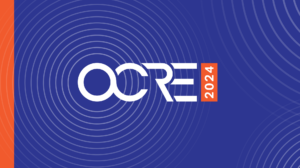If you haven’t seen a demo, or used it in a videoconference during the pandemic, it’s time to get to know more about eduMEET. On the occasion of Cybersecurity Month 2023, we zero in on many of the platform’s most important security features and benefits for the R&E community.
 eduMEET is an open-source WebRTC based software platform for implementing an easy to use, secure, and affordable web conferencing service. It is quite simple to incorporate it within other more complex and integrated solutions and any modern web browser can display its end-user client interface.
eduMEET is an open-source WebRTC based software platform for implementing an easy to use, secure, and affordable web conferencing service. It is quite simple to incorporate it within other more complex and integrated solutions and any modern web browser can display its end-user client interface.
Additionally, eduMEET is developed by NRENs and specifically designed for NRENs, schools, colleges, universities and research institutions to create their own on-premise Video Conferencing (VC) infrastructure and services, with a particular focus on privacy, security and digital sovereignty.
Its upcoming 4.0 version, due to be released in late 2023, adds new end-user features and further develops the platform architecture to enable increased federation and mutual resource-sharing between sovereign deployments. This paves the way for a variety of future scenarios for community federation and resilience support between community member operators.

Security and privacy as top priorities
Academic networks and the R&E community have particularly high standards when it comes to security, privacy and data sovereignty. While commercial cloud offerings bring numerous advantages and drive innovation, their policies and priorities can sometimes diverge from the requirements and values of R&E organisations.
“Data security is mission-critical when it comes to academic research data” says Bartlomiej (Bartek) Idzikowski (PSNC), Task Leader for the ongoing transition of eduMEET from GÉANT project-developed offering into community-financed “standalone” software.
“eduMEET is the solution that best combines the benefits of being on-premise, and having full control, with the agility, ease-of-use and responsiveness of WebRTC.” – Bartek adds. “That means no tracking, audited to remove backdoor vulnerabilities, easy-to-use encrypted audio-video streams, and no analysis of stream or chat content. And it’s completely powered by opensource software with full and transparent access to the code.”
eduMEET 2023: State of uptake
Throughout the GÉANT community, there are currently numerous examples of installations and deployments of eduMEET. For instance, PSNC in Poland deployed a dedicated eduMEET service for the Poznań City Council, used for both local administrative purposes as well as meeting with city residents. Educational projects in PSNC and PIONIER use the platform daily, alongside the central service for the PIONIER network. In addition, there are instances in MAN (Metropolitan Area Networks) local centers throughout Poland and in a number of universities, where they are managed by local IT staff.
In Italy, GARR manages GARR Meet: an open national infrastructure that integrates eduMEET instances together with other opensource solutions for a wide range of different applications and purposes, such as BigBlueButton opensource virtual classrooms and more.
In Nordic countries, colleagues at NORDUnet are harnessing their expertise by repurposing hardware servers from previous commercial AV solutions to deploy eduMEET.
In Albania all universities maintain their own dedicated, independent instances of eduMEET, installed and managed centrally by RASH. And in Hungary, KIFÜ offers open national instances for research and education.
However, Bartek says, the most important aspect is that R&E is part of eduMEET’s DNA: “The eduMEET developers understand the needs of the R&E community because we are part of it. We listen, we hear their requests and understand their pain points. That’s how we adapt our roadmap to meet these needs and roll out new features.”
A final look
When choosing a real-time video communication platform, it ultimately comes down to balancing priorities: security, privacy, and sovereignty against availability, ease of use, and cost. For one set of stakeholders with affordable hardware infrastructure and operations support capabilities, eduMEET allows to reach a “sweet spot” between these sometimes seemingly conflicting priorities. Creating a community-wide, or local on-premise videoconference service based on eduMEET delivers it all: ease-of-use, cost-effective deployment, reliability and data security and sovereignty in your own hand.
Visit edumeet.org to learn more.




